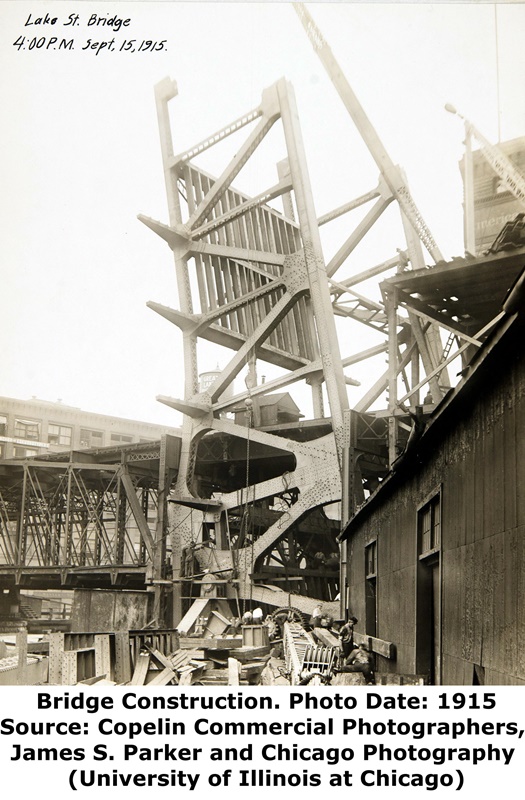The Lake Street Bridge is one of the most iconic bridges in Chicago, however it does not make the same appearances in films as the Wells Street Bridge.
The bridge is one of the most unique structures in Chicago, and one of only two that is a double deck structure.
The lower deck of the structure carries Lake Street, while the upper deck carries CTA "L" Trains.
This fixed trunnion bascule bridge is one of the finest in Chicago, joining the ranks of many other bridges, such as the Wells Street Bridge.
Chicago constructed many road bridges of this design, due to wide navigational channels.
The bridge is a double leaf style trunnion bascule bridge, with each leaf containing 6 riveted panels.
The bottom chords are curved on either end to allow the bridge to raise and lower, meaning the clear span of the river is only 164 feet, as the sides are much too low for navigation.
The substructures are made of concrete, which include an ornate abutments and operators tower. These substructures have been partially reinforced with steel sheathing.
In addition, the railroad deck contains an 12 panel, riveted Warren Pony Truss approach on the east side, which crosses Upper Wacker Drive. This pony truss connects directly to an 1890s elevated viaduct, part of the CTA.
Being located in downtown Chicago, with a large system of waterways; the bridge will raise and lower many times per day. Because of how massive the structure is, it is really unique to see how the bridge moves. The trunnion feature forces the bridge to pivot as it is being raised.
The previous bridges at this location also have a lot of history. The first bridge in Chicago was a ferry, built here in 1829. The first wooden floating bridge was built in 1849, and was destroyed by ice and replaced in 1859, again being replaced in 1885 by an iron swing bridge.
The current bridge was replaced without interrupting traffic, similar to the Wells Street Bridge. The design was originally supposed to be a vertical lift, although the bascule design was later favored.
When the new bridge was built, the leafs were assembled in upright position. The inner panels of the leafs were not completed with deck to allow traffic to pass through. When these leafs were completed, the swing bridge was opened, and the center cut out.
Next, the spans would be lowered, and the deck completed. The remaining portions of swing bridge would be cut out, and the new bridge completed.
Overall, the bridge appears to be in good condition, and is well maintained.
The author has ranked the bridge as being highly significant, due to the unique nature of the bridge.
The photo below is the construction of the new bridge. These photos were used with permission from Historicbridges.org.
The photo above is an overview. Unfortunately, the weather did not turn out how I would have liked, and thus this bridge is on my priority list for next time.
| Upstream | Confluence of N. Branch and Main Branch Chicago River |
| Downstream | Congress Parkway Subway |

